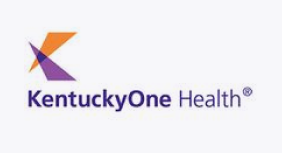April 28, 2022
Why Are Hospitals Looking To Patient Loyalty Programs?

Looking at patient’s as ‘consumers’ is a new concept for hospitals, and many are looking for new ways and tactics to ensure they are working to keep their patients as ‘satisfied consumers’.
Many hospitals have gone to great lengths to improve patient satisfaction and have implemented roles like a Chief Experience Officers (CXOs) to increase patient safety, quality of care and satisfaction.
Another concept that some have tried, and experienced success with, is patient loyalty programs. We have seen both Chief Executive Officers, and Chief Medical Officers spearhead these programs to support a range of organizational goals. The titles of the people who are put in charge of these types of programs have ranged from Chief Experience Officer, Marketing Director and Loyalty Manager through to the VP of Population Health.
A Healthcare Example
At the end of 2013, every patient in the Primary Health Network, a group of federally qualified community health centers in Ohio and Pennsylvania, began rewarding patients for showing up for their scheduled appointments. It was an effort led by now-retired CEO Jack Laeng to reduce the 15 percent “failed to show” rate at many of their medical practices.
In this program, every patient receives a reward for showing up to their appointment and can receive up to $50 worth of swag per year in benefits. Rachel Reichart, the network’s Marketing and Outreach Manager, commented that “The upfront cost is not high, considering the benefit we get … helping patients take control of their health,”
Support for a Loyalty Program
According to a 2015 survey on patient loyalty from the Advisory Board Co. negative online reviews, high costs and long wait times were among the top reasons nearly 2,000 people said they would switch to a different primary-care provider. A goal of these types of loyalty programs is to discourage patients from physician hopping, and the leakage in revenues that results. Patient care also benefits, as with physician consistency, patient care is less fragmented and better coordinated.
Customer loyalty is critical to the success of any business, including health systems. The authors of a March 2016 editorial in JAMA authored by three University of Michigan physicians, “Health System Loyalty Programs: An Innovation in Customer Care and Service,” suggests that health systems should consider customer loyalty programs for the same reasons they are so popular and widely used in business:
- It costs more to acquire new customers than to retain existing customers.
- Participants in loyalty programs are positively predisposed toward the organization.
- Participants refer others to the organization.
Well-constructed loyalty programs can produce benefits to both the patient and the hospital system. Patients might receive gift shop discounts, free parking, discounts at local restaurants, while hospitals maintain patient loyalty and keep patients within their system. The authors of the JAMA mentioned above article write “Loyalty programs could empower patients to manage their health in new and innovative ways while enhancing the business model for health systems. If successful, such programs may help improve both customer care and clinical care. That’s one membership card worth having.”











